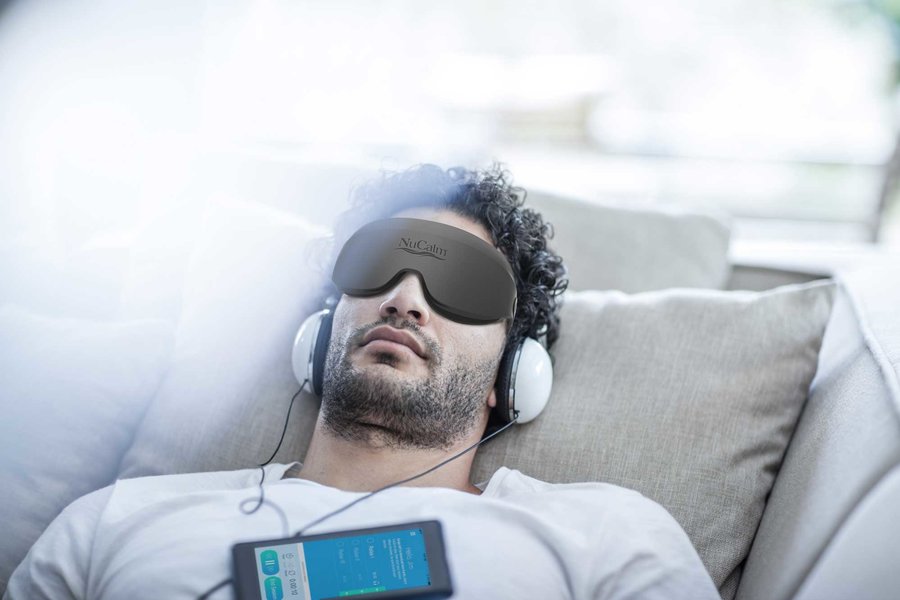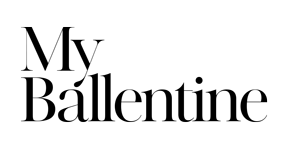

With just 30 minutes and a headset, NuCalm aims to make you anxiety-free.
One blustery spring afternoon I took the subway uptown to ReCover, a fitness and wellness studio housed in a nondescript office building a block south of New York’s Penn Station. I was there to engage in some next-level relaxation with NuCalm, a $4,695 system (or $45 for 30 minutes at ReCover) that has been cleared by the FDA to treat anxiety, insomnia, and depression by using binaural beats to channel brain waves into their most blissed-out state. You may already know about binaural beats. They’re an auditory phenomenon in which sounds at two slightly different frequencies are played in either ear: the brain, at least hypothetically, finds the differential and matches that frequency. NuCalm has been used by dozens of professional sports teams, by dental and plastic surgery offices, and by select branches of the military. Soon the devices will be available in club lounges and first-class cabins of a major airline (which one is still a secret). “I haven’t had jet lag in nine years,” brags Jim Poole, president and CEO of Solace Lifesciences, NuCalm’s parent company, who says he travels constantly. NuCalm has also made him “a better human being.”
At ReCover, I was given a sleep mask and headphones connected to a nearby iPad, an ointment to apply to my neck, and a pair of electrodes to affix on top. For the next half hour, I floated along to rainforest sounds in a sort of leaden semi-wakefulness, emerging a touch queasy but not at all groggy. What just happened? Poole explains that it all comes down to the autonomic nervous system, which comprises a sympathetic branch, governing fight-or-flight impulses, and a parasympathetic branch, governing rest and digestion. In our overstimulated lives, he says, we’re too often in the former, too infrequently in the latter, leading “to adrenal fatigue” and all the problems associated with chronic stress. NuCalm counteracts that, Poole says, by luring its users into parasympathetic dominance. The cream I applied to my neck contains the neurotransmitter GABA, which functions naturally in the brain as an adrenaline inhibitor; the electrodes deliver a microcurrent that helps GABA access its receptors; and the rainforest soundtrack is a Trojan horse for underlying binaural beats, which operate, says Poole, as a “Nascar pace car,” decelerating my brain waves from alert beta frequencies to drowsy alpha and theta frequencies. That’s the sweet spot, he says, for cell repair and healing. By that logic, NuCalm is better than a nap, during which we may bypass alpha and theta and head straight for delta, deep slumber. A Harvard Medical School study showed that 20 minutes under its influence equals at least two hours of restorative sleep. As Poole puts it: “Taking a nap is like riding a moped; doing NuCalm is like driving a Ferrari.”
Solace Life Sciences showed me a few studies that validate NuCalm’s ability to kick-start the parasympathetic response and put me in touch with Dr. Jame Heskett, who runs a New York City antiaging and wellness center. She recently made NuCalm available to her patients (she’s long used it on her son, who suffers from chronic pain). “The need for this technology is ubiquitous, and probably necessary for the ongoing survival of our species,” she insists, “because we just don’t have the natural skills” to manage stress, “nor the time to learn them.”
That may sound definitive, but the truth is that scientists are divided on whether binaural beats do actually have some special sway over the brain. I sent NuCalm’s homepage to Dr. Marc Schönwiesner, a professor of neurobiology at Germany’s University of Leipzig whose research focuses on the encoding of sensory information in the auditory cortex; he wrote back with the email equivalent of a face-palm emoji. “There is nothing special about binaural beats that would give them some sort of easy access to your brain,” he attests. “Your brain does not produce a single rhythm, and changing that rhythm (even if you could do it from the outside) won’t necessarily change your brain state.”
But the algorithm! And the GABA cream! And the microcurrents! Schönwiesner isn’t buying it. In any case, the latter two elements are yesterday’s news: Poole informs me that the new, vastly cheaper subscription version of NuCalm dropping next year forgoes the cream and electrodes for a “bio signal processing disc,” a sticker that adheres to an acupressure point on the wrist and from there instructs the brain to release GABA. Nixing the electrical current allows NuCalm to be marketed as a consumer, rather than a medical, device. “Our goal has always been to bring a product that can effectively manage stress and improve sleep quality without drugs to the masses,” says Poole. “This disc makes it possible.”
To Dr. Emily Deans, a psychiatrist who practices outside Boston, the sticker seems “pretty out there.” But she’s not as circumspect as Schönwiesner. In her clinic she regularly treats anxiety and insomnia with the Alpha-Stim, a medical device that uses cranial electrotherapy stimulation (CES), not binaural beats, to affect brain waves. Compared with CES, the beats, she says, seem like a “parlor trick.” Still, “I’m a clinician; I just care what works. I don’t necessarily care how.”
In other words, if the goal is to have a parasympathetic response and NuCalm safely gets you there: great. And NuCalm did make me feel different. Something was happening. Deans concurs. She jury-rigged her own version, using her Alpha-Stim with NuCalm’s cream, while listening to a free trial of its beats. The verdict? “Very relaxing!”
Content retrieved from: https://www.departures.com/lifestyle/nucalm-anti-anxiety-device.
